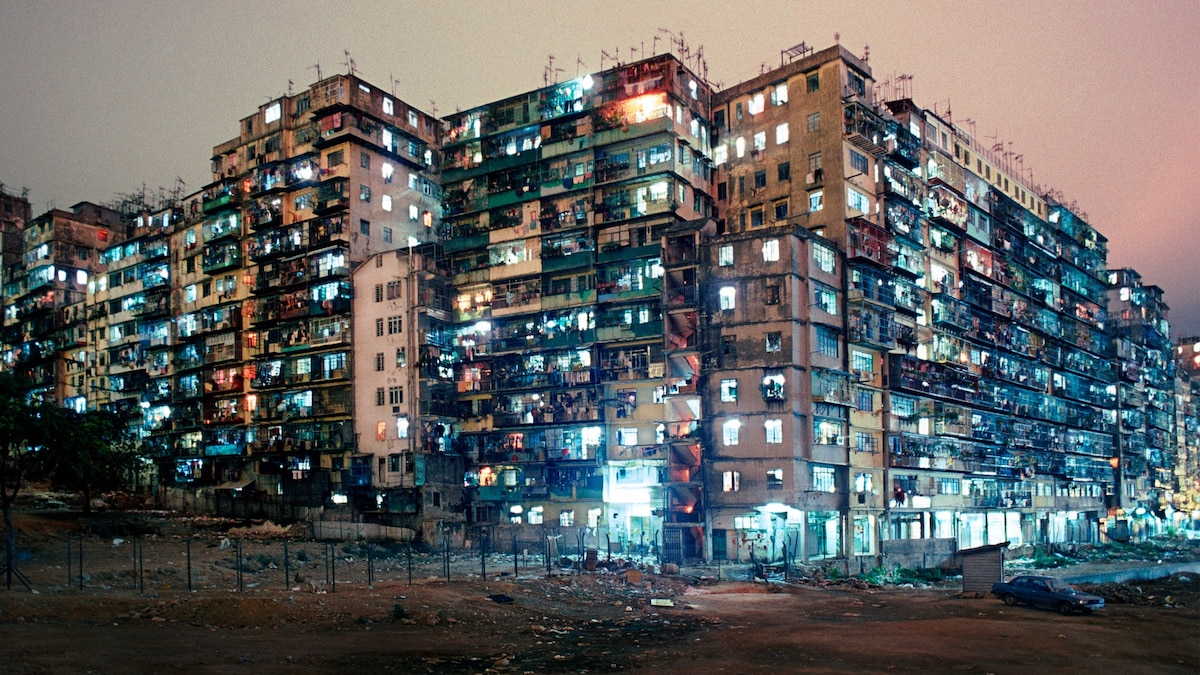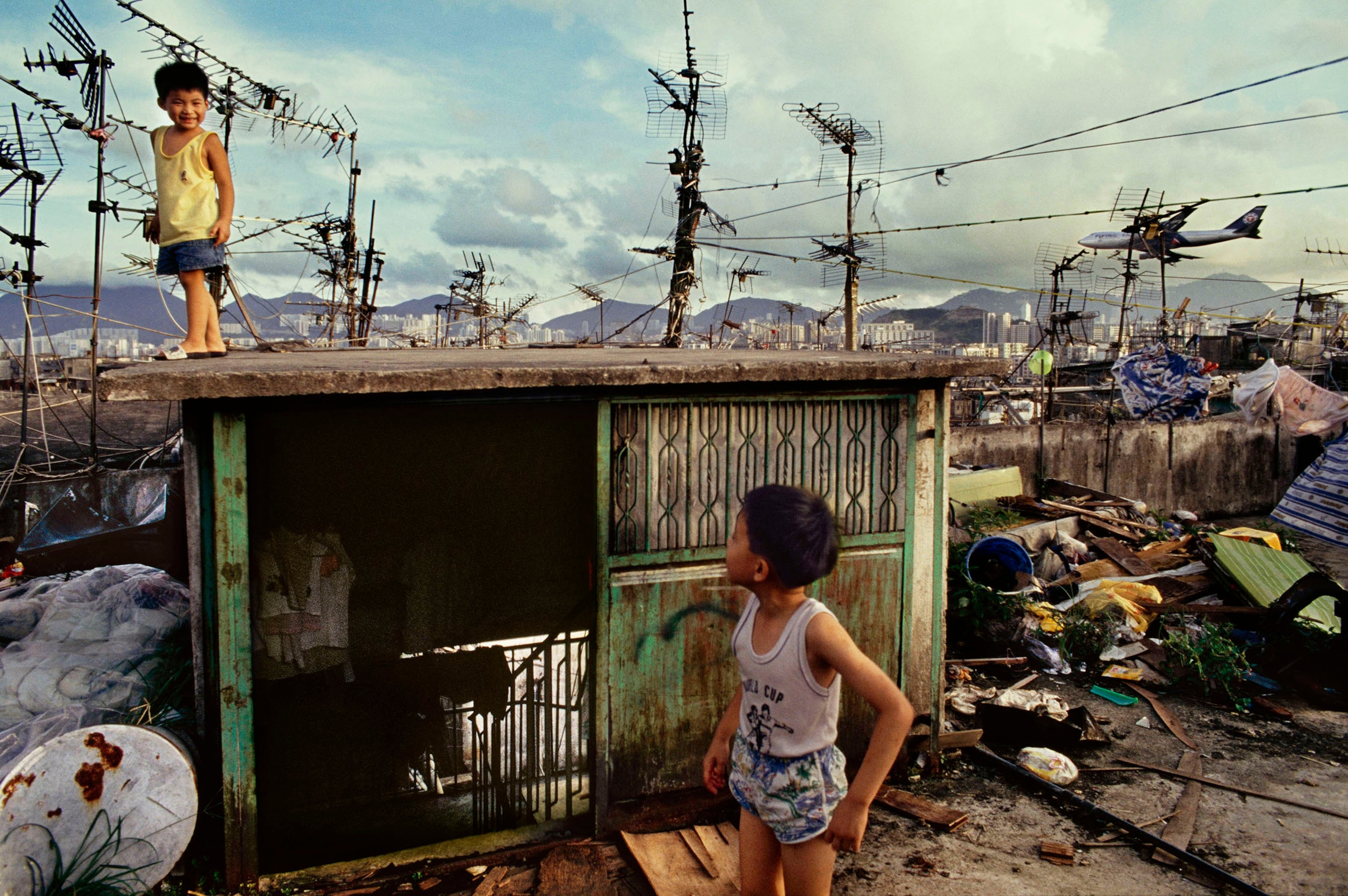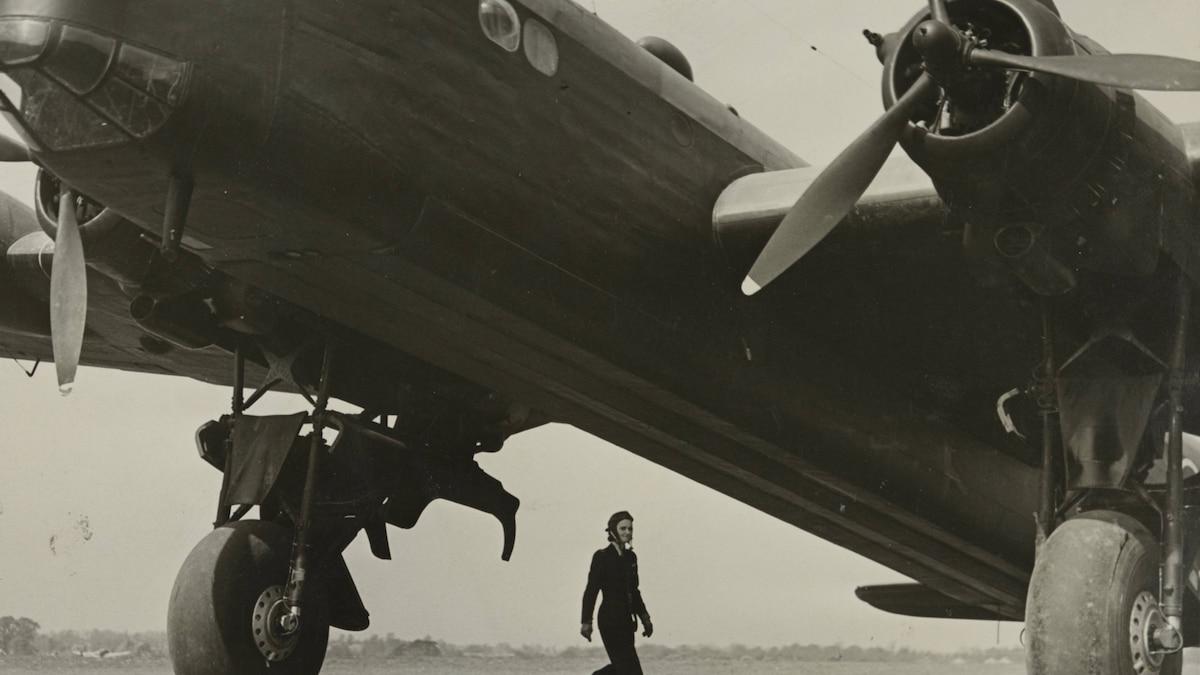Now Reading: Inside Kowloon Walled City—a lawless metropolis where anarchy reigned in Hong Kong
-
01
Inside Kowloon Walled City—a lawless metropolis where anarchy reigned in Hong Kong
Inside Kowloon Walled City—a lawless metropolis where anarchy reigned in Hong Kong

ByErin Blakemore
Photographs byGreg Girard
Until 1994, a tiny subsection of Hong Kong was dominated by a vertical city—a place so dense, it was hard to imagine how its 30,000 or more residents could survive there.
Known as Kowloon Walled City, the area was littered with trash, cluttered with crime, and renowned for its anarchy. Lawless and largely forgotten by both Chinese and Hong Kong officials, the city “has always aroused curiosity and fear, and few dared venture inside,” historian Elizabeth Sinn writes in the Journal of the Hong Kong Branch of the Royal Asiatic Society.
But how did Kowloon Walled City become so chaotic—and why did people choose to live there? Once called the “city of darkness,” this area was so tangled and contested that its legacy still lives on decades after its eventual destruction.


Kowloon, Hong Kong military encampments on land and fleets in the bay during the Second China War.
Photograph By Felice Beato, Wellcome Collection (Top) (Left) and Photograph By Felice Beato, Wellcome Collection (Bottom) (Right)
The origins of Kowloon Walled City
Though it would later become known for its lawlessness, Kowloon Walled City was originally a military and governmental center. Established as an Imperial Chinese signal station in 1668, the eventual city within a city was located on the northeast side of the Kowloon Peninsula that partially makes up Hong Kong.
(The history of Hong Kong, visualized.)
In 1843, in the aftermath of the First Opium War, British colonial forces took over Hong Kong. But the walled city—so named because of fortifications like cannons, a gate, and watchtowers—remained in Chinese hands during the first days of the British occupation. The British colonial government gave the military garrison a special administrative status, and over the years its Chinese inhabitants added a shopping area, customs house, school, pier, and other features.
Although it was seen by many as a necessary shield against British influence in the region, the city was nonetheless open to non-Chinese people. British colonists, Chinese visitors, and others flocked to the 6.4-acre walled city, which soon became a hotspot for gambling and recreation.

In Kowloon, there were 300 interconnected rooftops where kids would often play.
Contestation between Britain and China over the city
Then, in 1898, the British and Chinese signed the Convention for the Extension of Hong Kong Territory, a 99-year lease that would continue British rule in Hong Kong for another century. Now considered one of a series of “unequal treaties” that reinforced British colonial rule, the treaty at first excluded Kowloon City from British occupation.
The agreement came with a condition: Chinese officials were only given jurisdiction in the area as long as they didn’t disrupt British colonial attempts to “defend” Hong Kong. Just one year later, in 1899, the British decided that the city’s governor was assisting resistance against British colonial rule. In response, the British overran Kowloon City, occupied it, and declared they would oversee it in the future.

A police officer doing a stop and search, likely looking for drugs. This was a normal practice at the time, when officers were often looking for people who illegally escaped the mainland into Hong Kong.

The view from the outskirts of the city.
Photograph By Ian Lambot, Blue Lotus Gallery

An aerial view of Kowloon Walled City shows how crowded these buildings were at the time.
Photograph By Jodi Cobb, Nat Geo Image Collection
A lawless city—and a home
Impoverished and isolated, the city’s new residents lived in political and legal limbo. Neither the colonial government nor the Chinese government regulated the city, but the British tried, and Beijing officials resented the attempts.
You May Also Like
Thus, writes architectural historian Eunice Mei Feng in Resistant City: Histories, Maps And The Architecture Of Development, the city became “a criminal hideout…an aggregation of illegal structures susceptible to fire and health hazards.” Ad-hoc buildings turned into multistory complexes connected by balconies and steep staircases. Gambling parlors, strip clubs, restaurants, and unregulated markets proliferated among the coffin-like buildings, and the city was riddled with theft and poverty.
During the Second World War, Japanese forces occupied Hong Kong and tore down the city’s walls to extend a runway at a nearby airport. But even without a wall, the city was a place unto itself. “The disputed area is neither walled nor is it a city,” Paterson News wrote in 1960. “In reality it is a tiny enclave of sin and filth.”

Rooftops were a place of reprieve where children played and did homework. But the city below was dark and congested.

Planes from Kai Tak airport would often fly closely above the city while residents did their laundry on the rooftops.

Here, a man makes dough in a room covered in flour. Most of the city’s shops and markets went unregulated.
Photograph By Jodi Cobb, Nat Geo Image collection

Though Hong Kong had laws, many non-criminal offenses weren’t enforced due to the political status of the city.
Kowloon had limited access to city infrastructure such as garbage collection and running water. But for its residents—who moved there due to necessity, bankruptcy, or blight—it was home. In an analysis of resident oral histories, a group of Hong Kong-based scholars concluded that Kowloon Walled City residents had strong community ties, affordable housing, and a higher quality of life than international reportage usually depicted.
Topsy-turvy streets, ad-hoc residences, and crowded, tangled towers of homes and businesses gave the area a feel no other city could replicate.
“We walked along ‘streets’ no wider than my outstretched arms,” said U.S. foreign service officer Donald Michael Bishop in an oral history. “Looking up, the small slice of sky between the buildings was obscured by a thicket of illegal electric wires tapping the current. I could make out one lonely star…. Had we turned into any alley, or climbed the stairs, we would have seen the dark and ugly sides of the Kowloon Walled City.”
But tensions festered over the legal status of the city and its residents. Hong Kong’s colonial forces regularly kicked out people they characterized as “squatters” and destroyed homes and buildings. Yet officials largely abandoned the city’s residents, leaving them on their own to build what a group of U.K. sociologists later called “a form of makeshift community life, making do with what was available.”

It is estimated that before the city’s demolition in 1994, as many as 60,000 people may have lived in Kowloon.
Photograph By Ian Lambot Ian Lambot, Blue Lotus Gallery
The downfall of Kowloon Walled City
It is estimated that by the 1980s, up to 60,000 people may have lived in city boundaries. But time was running out for both the British colonial government and Kowloon Walled City. As China and the U.K. made plans for the eventual handover of Hong Kong to the Chinese, they announced in 1987 that the city would be demolished. The city was leveled in 1994 after nearly a decade spent resettling its residents, and is now a park and archaeological site.
Though known to the outside world as a den of vice and danger, Kowloon Walled City is still seen as an example of creativity and resilience in the face of neglect and repression. The “city of darkness” may be just a memory today, but it continues to capture curiosity, hinting at what can be accomplished by communities struggling for survival.























